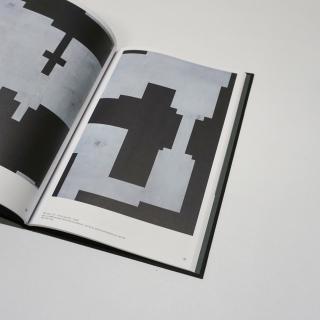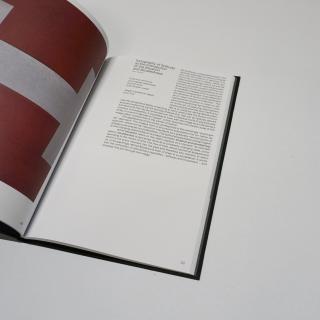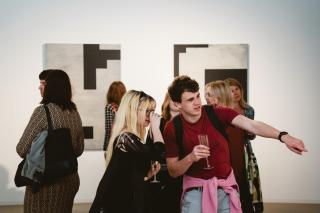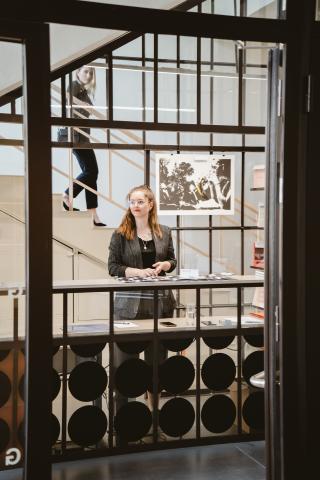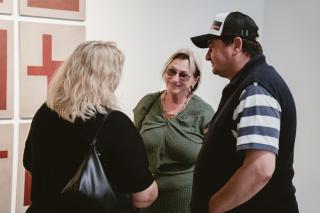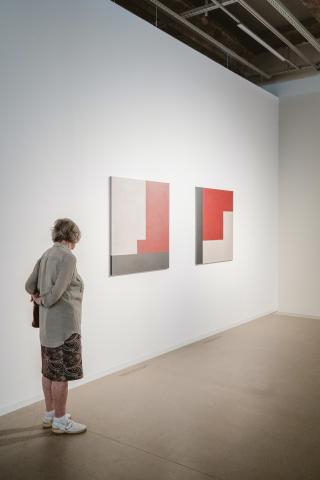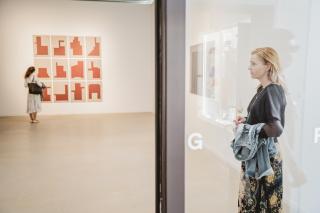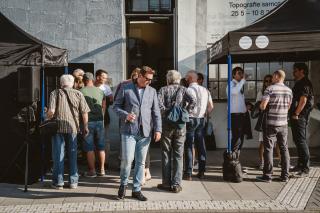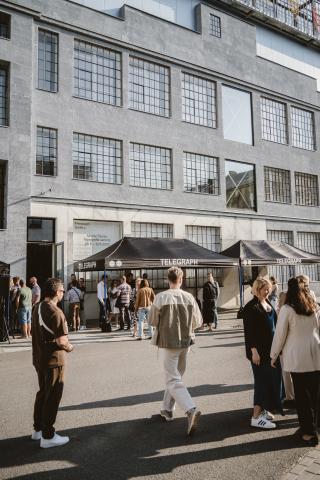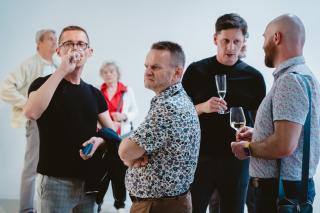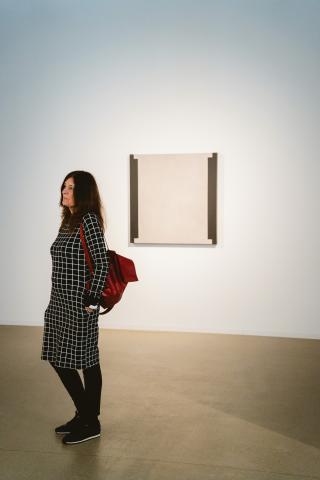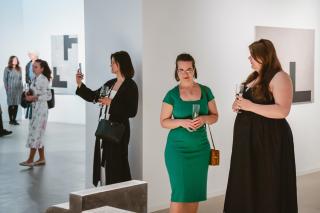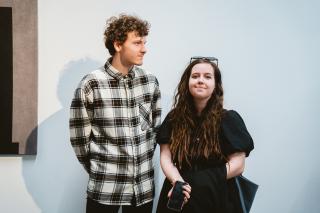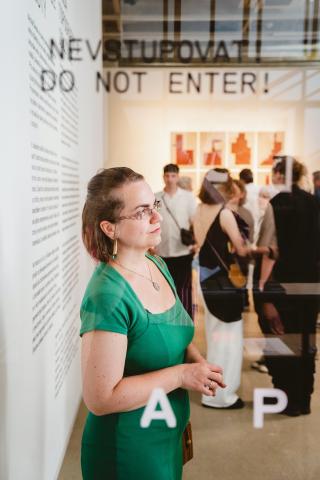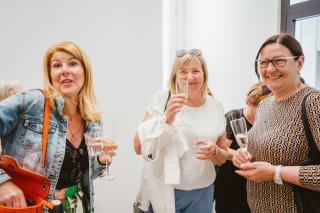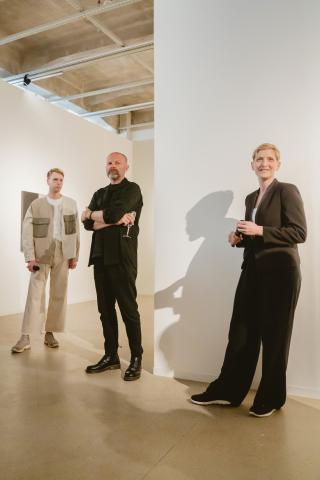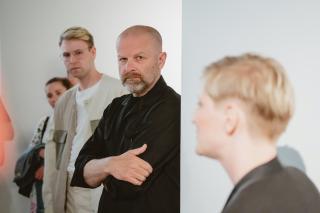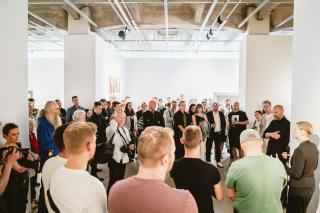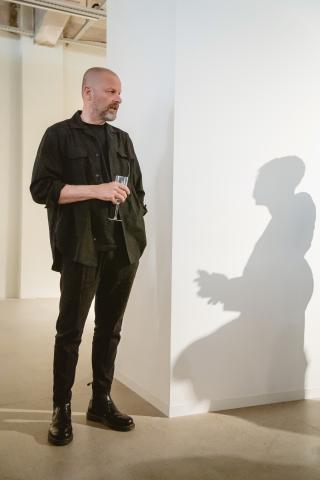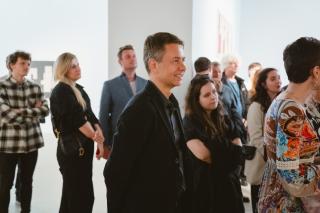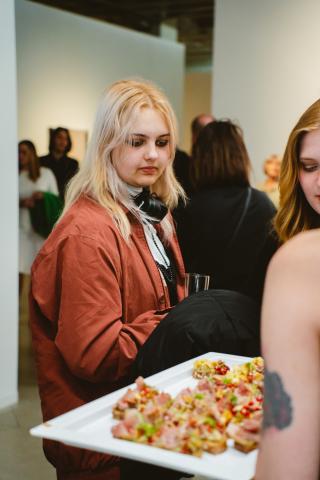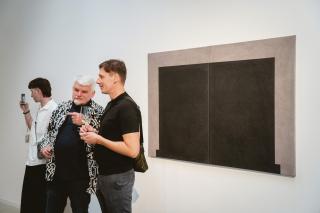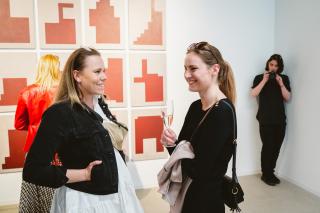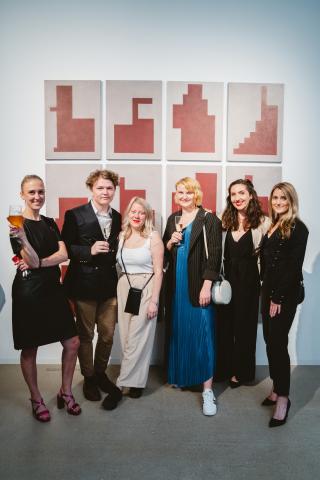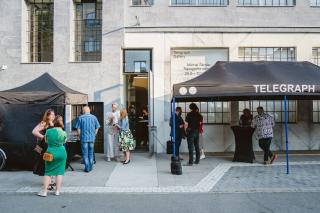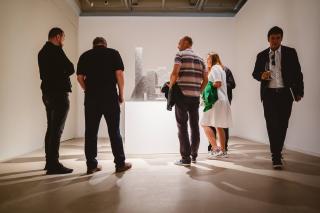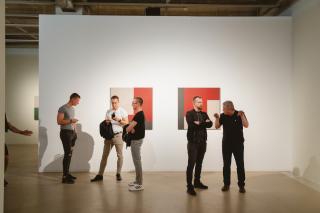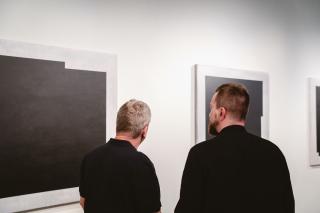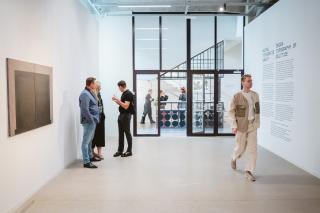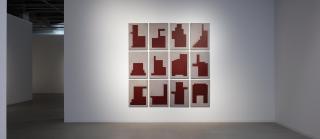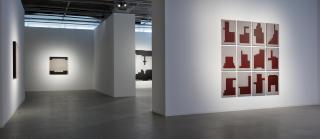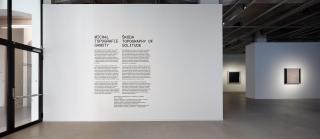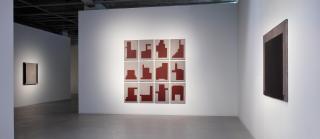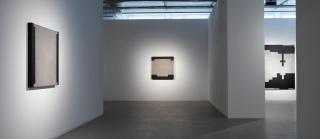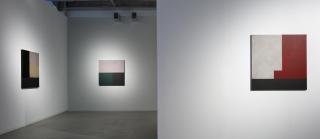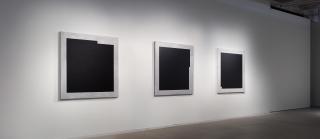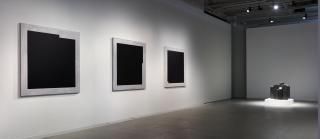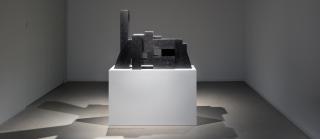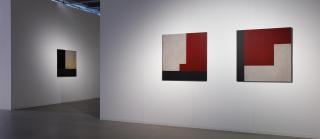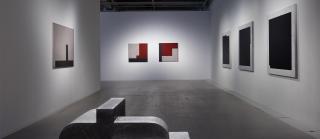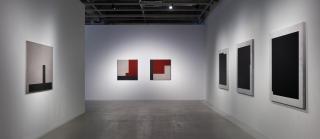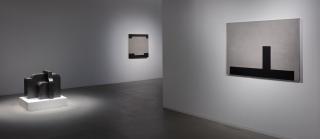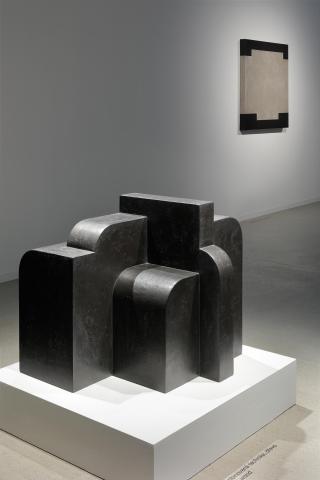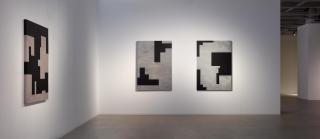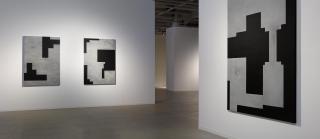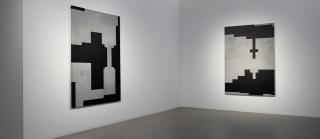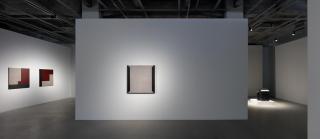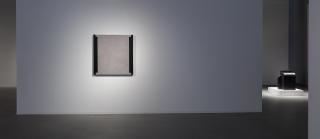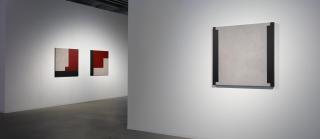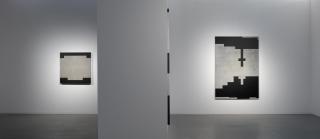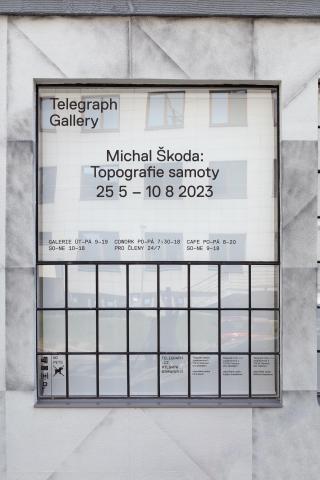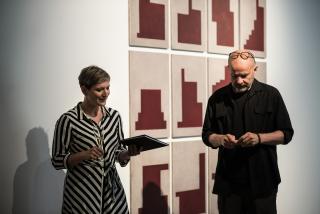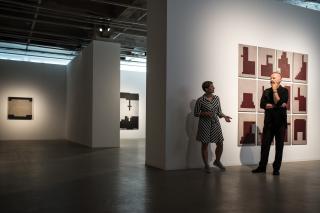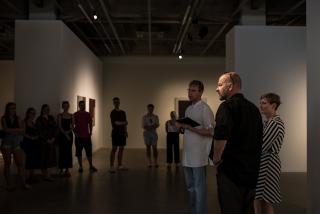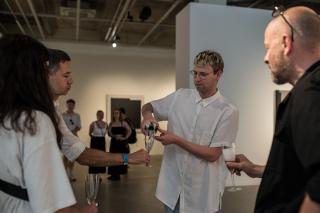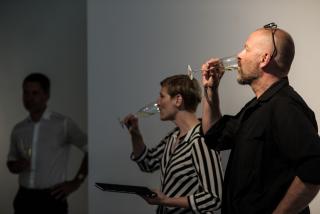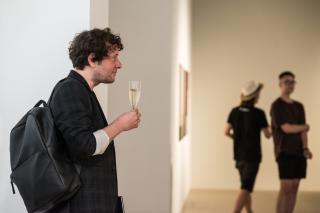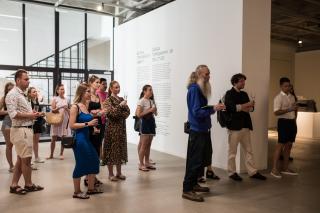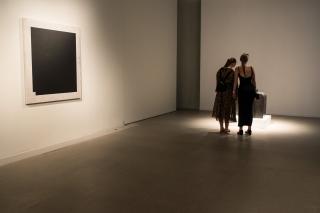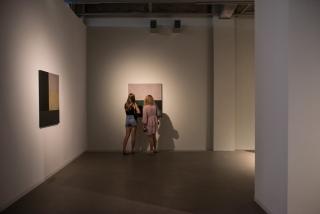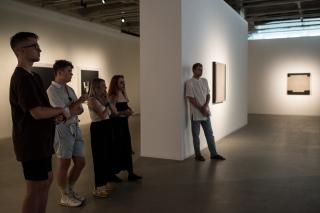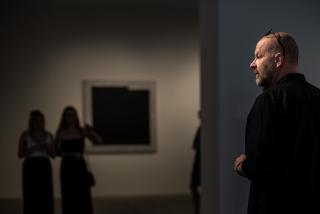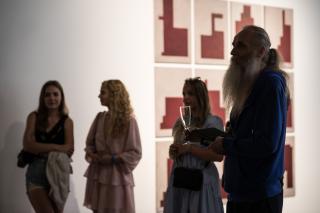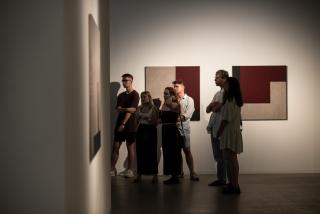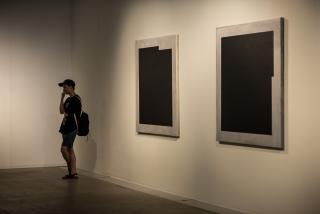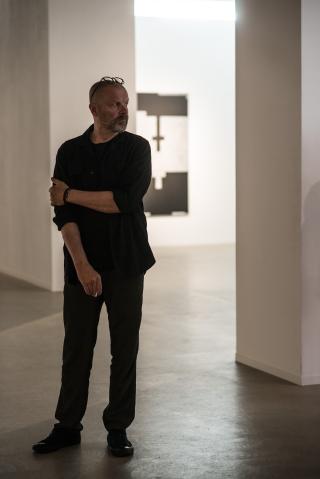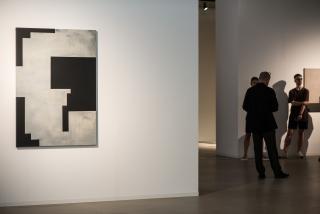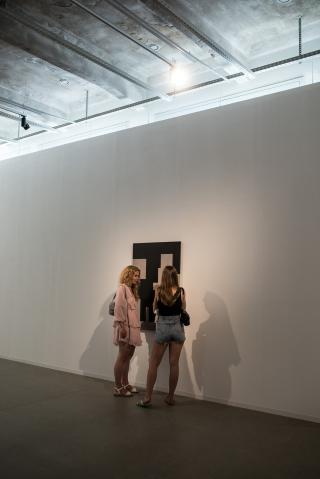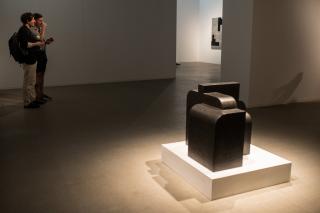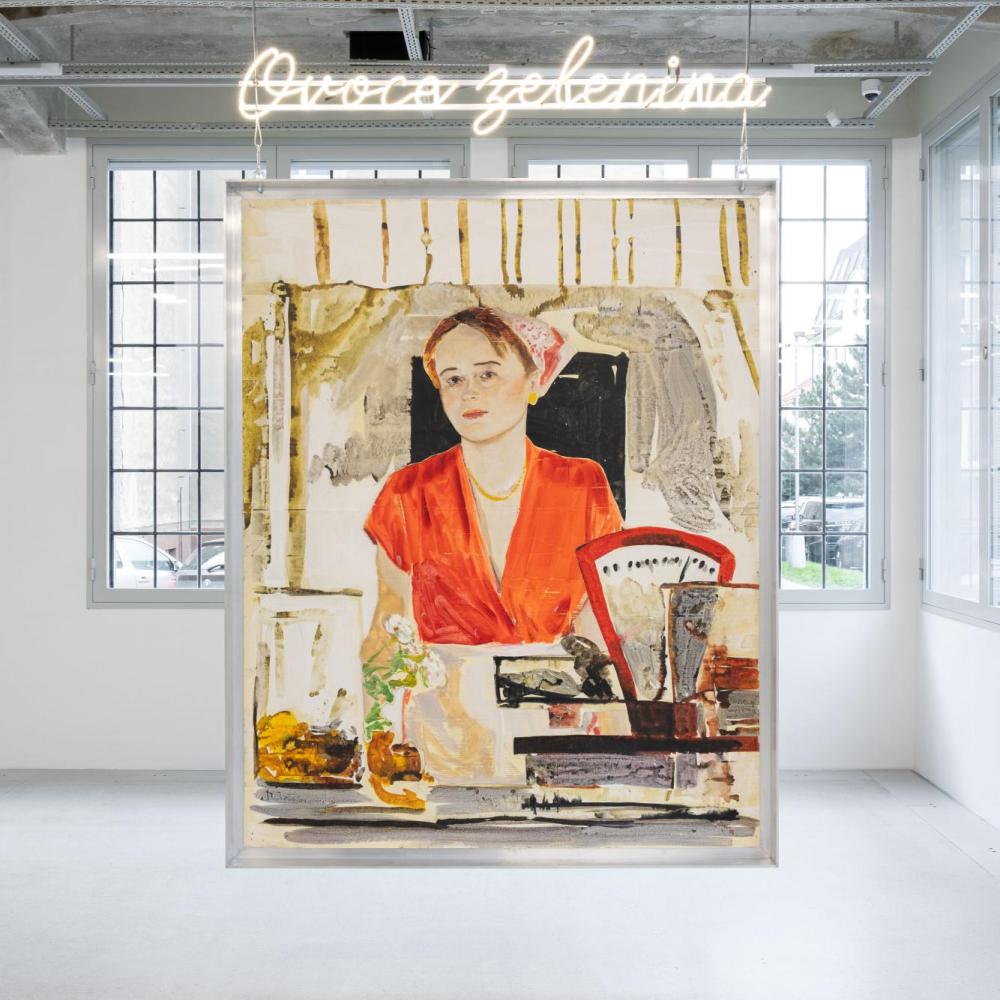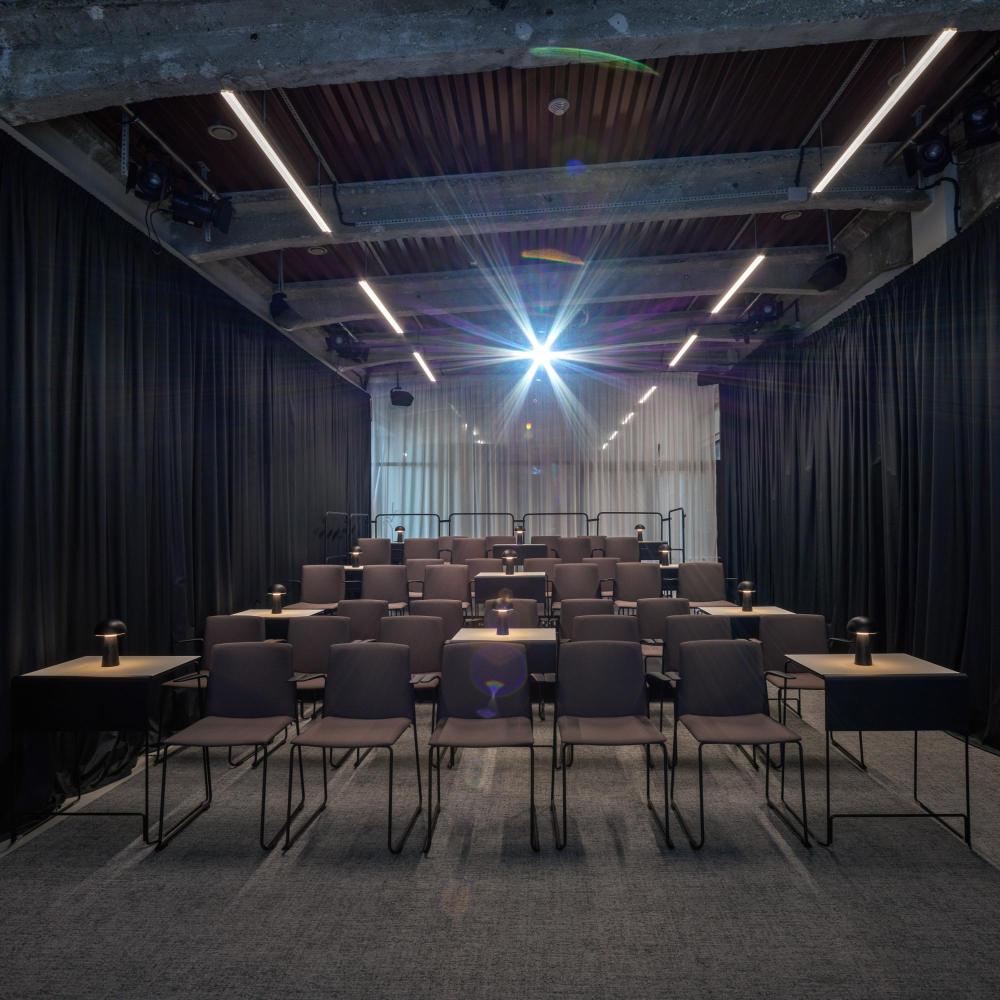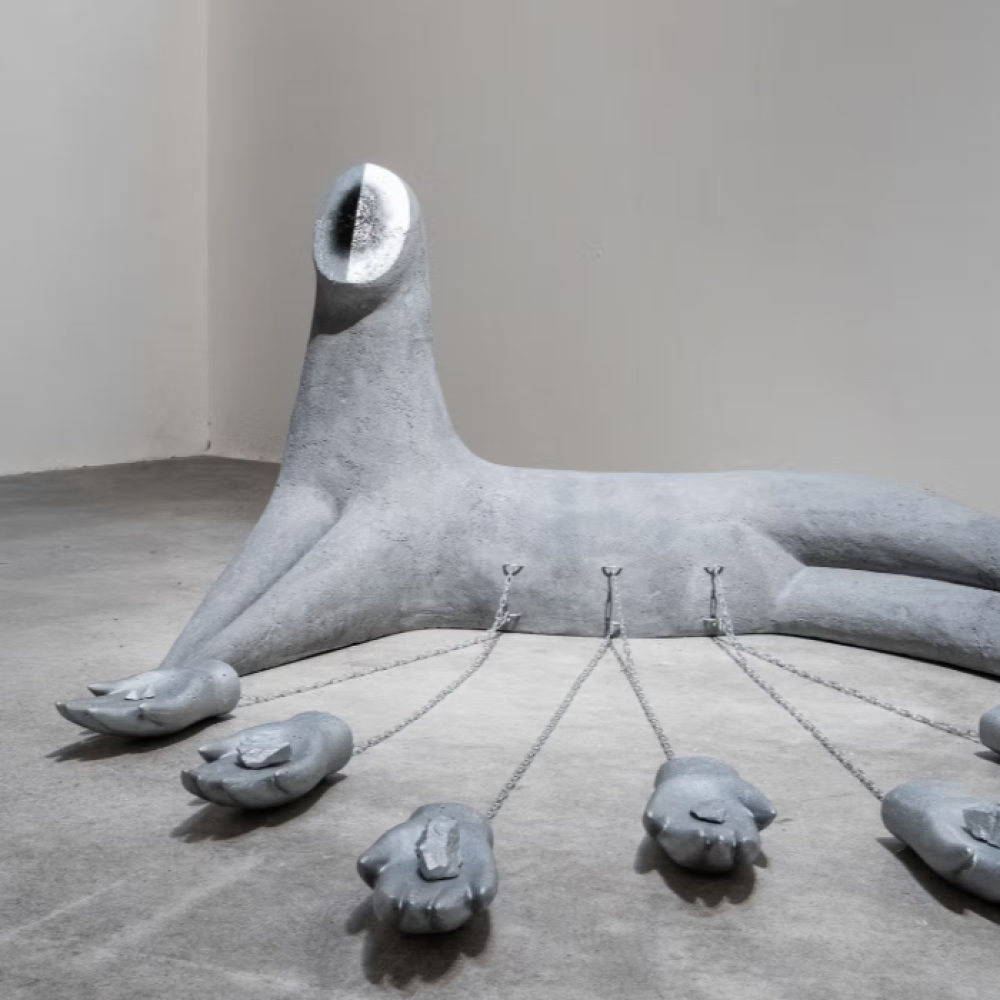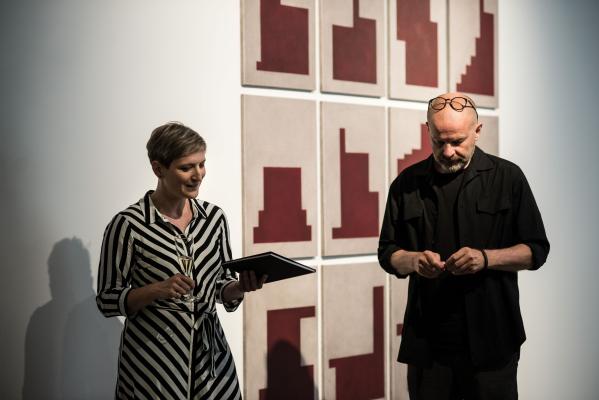
On Thursday, 22 June 2023, a new catalogue for Michal Škoda's current exhibition Topography of Solitude was launched and you can already buy it directly at our reception or order it from the e-shop. The exhibition is curated by Silvia L. Čúzyová, who contributed one of the two text chapters to the publication. The exhibition itself will run until August 10, 2023, so there is still plenty of time to visit us and be enchanted by the purity of geometric abstraction. Although most people know Michal Škoda primarily as a sculptor, drawing and painting are just as important to him. It is his paintings that form the mainstay of the entire exhibition, complemented by two of Škoda's sculptures of typical black objects. The exhibition presents more than 30 canvases from his most recent work from 2020-2022. The topography of solitude becomes an unusual depiction of the artist, giving room for reflection.
When you first pick up the new publication, you are immediately drawn to its black plates, which reflect the classic colour palette of most of Škoda's sculptures, as well as many of his paintings. The clarity of the plates is complemented by glossy black blind-printed letters announcing the title of the exhibition. Inside, for a change, the catalogue glows with white-glowing pages, thus foreshadowing the contrast of colour in Škoda's black-and-white works.
In the first part of Pictures (of) Landscapes, exhibition curator Silvia L. Čúzyová discusses Škoda's interest in paintings. But she does not mean only images in the strict sense of the word, but also records of the various images with which life is filled, records of the everyday, an archive of impulses and immediate visualisations. He also mentions Škoda's lifelong themes - his interest in space, architecture and the human place, which he describes and interprets in detail. He also discusses specific works in the Topography of Solitude exhibition, where the paintings on display belong to a larger body of work in which Škoda has tried several approaches, and which include intermediate phases and experiments that have not previously been included in his exhibition concepts. All of Škoda's works bear the title Untitled, to which he further assigns numbers that allow us to trace how his ideas have gradually materialized and transformed. Silvia L. Čúzyová then discusses individual works and cycles in more detail, pointing out, for example, Škoda's first colour paintings, which are a cycle of twelve canvases with geometric figures in vermilion on a grey background. After a more detailed analysis, one gets the impression that the colours in the artist's paintings are related to his immediate feelings at a given moment. Finally, he discusses the two objects present in the exhibition, which represent his sculptural work of recent years, and points out that they have not been exhibited anywhere so far, although last year a number of his black objects were present in spectacular exhibitions at the Troja Castle in Prague and at the Hluboká Castle in the Aleš South Bohemian Gallery.
The second part, entitled The Topography of Solitude as the Intersection of Situation and Situationality is a contribution by Peter Vaňous. His text deals more with the art historical and methodological view of Michal Škoda's painting and tries to put it in a historical context. In this way, he speaks eruditely about the polarity of situation and situatedness and their changing relationship. He writes: "Watching Michal Škoda's paintings, we seem to become fictional pedestrians in a virtual urban landscape divided into many different visual episodes." She tries to get the reader to think about the artist's works in a context other than as expressions of geometric abstraction. It attempts to get us to look for a broader meaning and to view images as layers of experience and memory that are under the control of reason as opposed to those that elude it.
The third part of the book is a rich pictorial appendix of the individual works on canvas, with classical titles without titles, just a number line, so that the viewer can project the environment and experience in the works themselves and follow the artist's thoughts as they are transferred to the canvas.
On the next two pages we are treated to a biography of Michal Škoda, focusing on his exhibition achievements since 1997, as well as his awards and residencies abroad. This is, of course, a selection of his most important exhibitions, as he has had many over the last 25 years. The last part of the publication gives us a glimpse directly into the exhibition. We can thus see in the photographs the simplicity and purity of the installation, where the individual works complement each other beautifully. Behind the photographs is Martin Polák.
So the publication can be yours, all you have to do is get it and you can have a catalogue at home that is as pure in geometry and colour as Škoda's works.

